Olympian Profile: Kaetlyn Osmond
She’s just beginning, this 18-year-old Kaetlyn Osmond, the woman with uncommon flair, and now a two-time Canadian champion on her way to the Sochi Olympics.
She is blossoming, despite a injury-filled season. It was no accident that Osmond decided to have a long program created for her this year in which she would depict Cleopatra, a strong woman in the scheme of things. Cleopatra was the first female pharaoh of Egypt at the turn of time, refusing co-rulership with a man, as was the custom. So powerful was she, and so stunning her charms, that she was a few nasty battles away from becoming the ruler of the western world.
Cleopatra is the perfect metaphor for Osmond’s aims: rising to power. “It’s the exact same thing I wanted to do this year,” she said. “It’s my own rise to the top of the podium in the Olympics. We were aiming to weave the story of Cleopatra into my own life. And that’s exactly what I want to have.”
Osmond has come far and travelled far to get where she is now. She started skating at the only rink in Marystown, Newfoundland as a two-year-old tagalong behind sister Natasha, before the family moved to Montreal, then Sherwood Park, Alberta, near Edmonton. With everything she has learned along the way, Osmond delivered the most impressive debut at a world championship by a Canadian woman in decades: fourth in the short program, eighth overall.
She’s the ultimate competitor, relishing the sounds of battle, filling the rink with her presence. Perhaps she won’t be rising to the top of the podium at thisOlympics. She’s realistic and so is her coach, Ravi Walia. She’s relatively new to the international scene and its demands, landing on it only two years ago. Some of her competitors have been doing this for 10 years (Carolina Kostner.) Some have been doing it less (Julia Lipnitskaia). This season, Osmond’s path to the podium has been hampered by one injury after another. The problems have tempered her plans, if not her spirit.
Last year, she landed a triple-triple combination in the short program to good effect. This year, she planned to carry it over to the long, but after she developed a stress reaction in a left foot during the summer, and then a hamstring tear that caused her to pull out of Skate Canada International in Saint John, New Brunswick last October, Walia had to rewrite the path to Sochi.
The second injury was worse than the first. With her stress reaction, she could still skate on the foot, although she couldn’t do all of the jumps. The hamstring injury completely hobbled Osmond. “When I got back on the ice, I could barely do my crosscuts,” she said. “I had to work so many edges and so many stroking exercises before I could even think about jumping.”
Usually, she would add the spins before the jumps, but on the second day back, she was about to push into a spin when she felt excruciating pain. She lost two and a half weeks to recovery, and then spent another two weeks just doing stroking exercises.
Finally, after a good effort in the long program at Skate Canada Challenge, when she had to come from fifth in the short, Osmond learned another lesson: to forget about the short program, no matter how well or poorly you do in it. Now she’s skating stronger than ever.
All of the problems had a silver lining: Osmond was forced to learn perfect technique. She felt pain if she used the wrong technique. She also learned how to overcome adversity with confidence and “knowing no matter what gets thrown at me, whether it’s good or bad, I can still stay with a positive attitude and stay focused and calm and able to skate.”
Her goals in Sochi are to continue with the same list of jumps she had last season, and with that, finish within the top eight. Osmond won’t try more difficult triple-triples because she says she does not have enough competition experience to throw them in for such a major event like the Olympics – her first international competition this season.
She admits that she’s probably ready to do more difficult triple-triples (she had been working on triple flip – triple toe loop). “They are super easy for me,” she said. She aims to skate two clean programs and show that she can come back from anything and be ready. If she didn’t get hurt, she’d still follow the same path, she said. “The only thing I’m aiming for is to do better than I did last year,” she said.
That’s realistic, Walia said. “She wants to skate two clean programs perfectly and that could put her higher than eighth,” he said. “It really depends on how the other skaters skate, also.” He knows Osmond doesn’t have the most difficult content in her program. If her international peers skate their best, they’ll have great results. Her one effort at a triple-triple in a long program during a summer competition didn’t go well. Her best bet for Sochi is to rely on what she has done many times, with combinations she can rely on.
“Last year, she had just learned these things so quickly and so now she has an extra year with them and that’s why she’s consistent in practice and why she’s so confident,” Walia said. Her tribulations have been a blessing in disguise, Osmond says. She was shocked with her effort at the Canadian Tire National Skating Championship. At the Olympics, anything can happen.
Want to read more about the figure skaters who will compete at the 2014 Olympic Games in Sochi? Pick up Beverley Smith’s new book SKATING TO SOCHI! The book profiles the top 40 athletes/teams with full-colour photos! Order online: Amazon.com, Lulu.com (ebook) or iTunes (ebook).
Beverley Smith


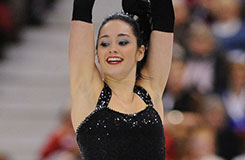
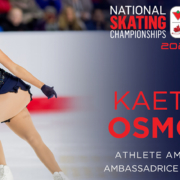
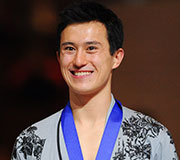
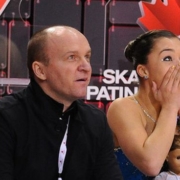
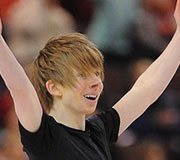

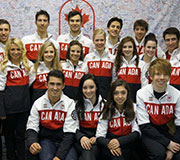
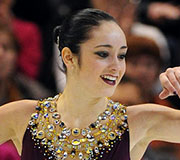
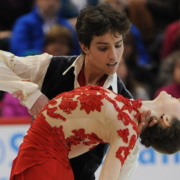


Leave a Reply
Want to join the discussion?Feel free to contribute!